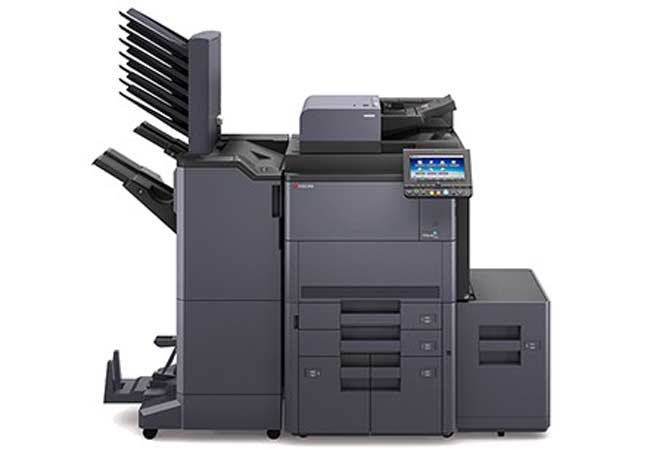Even the most modest commercial organizations today need at least one printer. Both dedicated printers and multifunction devices can make a tremendous positive impact on workplace efficiency; many people are unaware of their full potential. If you and your coworkers are still relying on a slow, unreliable printer, it might be limiting your productivity in ways you don’t even suspect. Modern organizations have a vast range of devices to choose from, but the three basic features discussed here are emerging as absolute must-haves.
#1. Networking and Mobile Printing

In some very small organizations with specific needs, assigning each individual a cheap desktop printer might make sense. By and large, though, splitting your printer resources up that finely is becoming a thing of the past.
Networked printers are already the de facto standard in most workplaces. Employees have enjoyed the flexibility of being able to send print jobs to a central printer for years or even decades. As the business environment continues to evolve, even greater flexibility is required. Today’s work teams need printing resources built to handle mobile devices and remote working.
Wireless printing technology is paying for itself many times over by tearing down productivity roadblocks in every office where it’s used. A printer with up-to-date wireless technology allows team members to print from virtually any sort of device, including tablets and smartphones. A combination of strong networking features and wireless printing capability should be considered essential for any new printer or multifunction device your organization acquires.
#2. Security

As commercial computer networks embrace an ever-growing collection of different devices, new security threats are discovered constantly. The security of your printer absolutely needs to be considered as a serious, high-priority issue.
With a moment’s thought, it’s not hard to understand the need for security on your printers. Cutting-edge printers and MFPs have just as much technological sophistication was your business’s computers; they, too, have hard drives and internet connections. The number of potential vulnerabilities is enormous. Even in 2013, Google announced that it had discovered more than 86,000 HP printers that were unsecured and picked up by its indexing software. That was some time ago, and that was just one manufacturer. Printers with poor security present a two-way threat. Not only can someone outside your organization send documents to an insecure printer, but unauthorized users could intercept and read the documents your company is printing. Networked printers absolutely must have strong encryption to protect the organization.
Beyond keeping your network secure, though, there are also more machine-centric security considerations. For organizations where document control is a high priority, a pull printing setup protects the physical documents that printers create. In pull printing, print jobs stay on the server until the authorized user provides a manual release at the physical device. You have to go to the machine and enter a PIN or password to print documents.
Malicious intruders who struggle to deal with the extensive protection deployed on modern PCs and servers often look to a networked device like a printer to be their backdoor into a network. Make sure you keep security at the forefront of your mind when you pick out and install printers and MFPs.
#3. User Interface / Customization

An MFP device may have a vast range of different functions, but it is only as useful to your particular organization insofar as it fits into your unique workflow. The ability to create a custom user interface can be a potent productivity-boosting tool. Customization is typically only an option on printers and multifunction devices that have a touchscreen interface.
While the number of different functions we expect out of printers grows ever larger, the interface we use to control them cannot be allowed to grow correspondingly complex. When you customize your printer interface, you can pare away options that aren’t required for your workflow. This makes the printer easier to learn and use for your coworkers. Here are some of the powerful advantages you can enjoy by customizing your printers’ user interfaces:
* Minimal number of button clicks required for common printer operations
* Hide options that are not used
* Hide settings that end-users should not modify
* Make key features easier for users to find.
The modern professional environment evolves at an incredible pace thanks to the constant forward march of technology. Commercial organizations in every industry rely on printers and multifunction devices. Make sure you’re really getting the most out of your printer so that you know your workplace is as efficient and secure as possible.
Recommended For You: